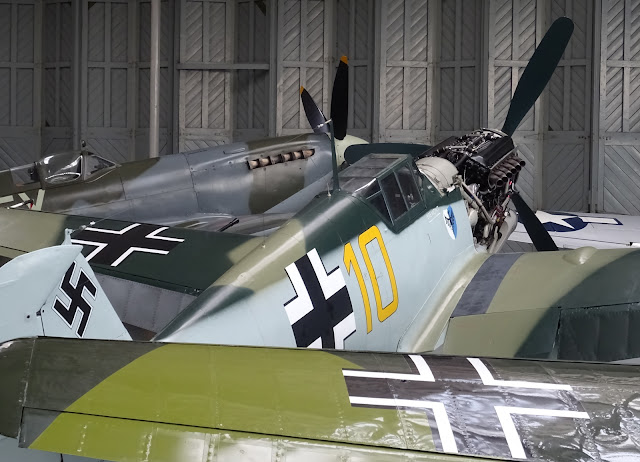After the chaos of Storm Doris the day before, Friday dawned clear and calm.
If you've been following this blog all along then you may remember me testing out the Twister in FSX Flight Simulator about 5 years ago. See January 2012 for the post. The 'testing' was done at Duxford and now I've flown in there for real.
This was my first time landing and taking off from a hard runway with G-FUUN and I have to say it again - this is a viceless taildragger - very straight forward. Just had to be cautious of my poor turning circle when asked to backtrack on the main runway - so a swing to the left a bit before turning right was the answer. It was slightly more squirrelly on take off - yawing left and right than on grass but nothing too bad.
Some very good news - the LAA has approved the testing paperwork and has sent off to the CAA with a recommendation for a full Permit to Fly. So I've just got to be patient now and wait the 10-14 days for that to come back.
In the meantime I will use the time to perform the initial 15 hour engine maintenance.
A few of other things I forgot to say in my last post were that the cabin noise is indeed low - as I thought it was - 88db to be exact. This is a full 10db quieter than the Pipistrel and Piper I was flying before.
The other thing I did was climb up to 14,000ft - to see if it would do it first of all and then to see what kind of cruise I could get out of it at that altitude. Cruise was 106knts indicated which is about 130knts TAS - so even if I have to file IFR for the Greenland Ice Cap crossing I can do it - they give a minimum based on the QNH that day and it can be as high as FL140. I see that a guy who flew his RV8 back from the USA to the UK did a VFR crossing at 11,500ft. So that is all that is needed for terrain clearance but it would be good to have the flexibility of being able to file IFR should I need to fly above some cloud.
And finally, lately I've kept the cowl flap closed for the entire flight. Temps are well within range and even doing sustained climbs and aeros the oil does not get hotter than 95 C and is typically in the mid 80's. So the cowl flap is useful to keep the oil warm in the Winter and for high altitude cruising.
 |
| Compare the wing above to the Mk24 Spitfire here |
 |
| Concorde from below |
 |
| Concorde flight deck |
 |
| TSR2 and Vulcan (amongst others) |
 |
| Spitfire and ME109 Buchon |
 |
| The seemingly-never-to-be-finished Beaufighter. |
 |
| Sally B/Memphis Belle |
 |
| Winter maintenance on a Mk Vb Spitfire and P-40 Tomahawk |
 |
| In good company |
 |
| Departing. American hanger on the wingtip. |
 |
| 'Testing' G-FUUN in FSX 5 years ago. |
 |
| Yesterday, the real thing. |






